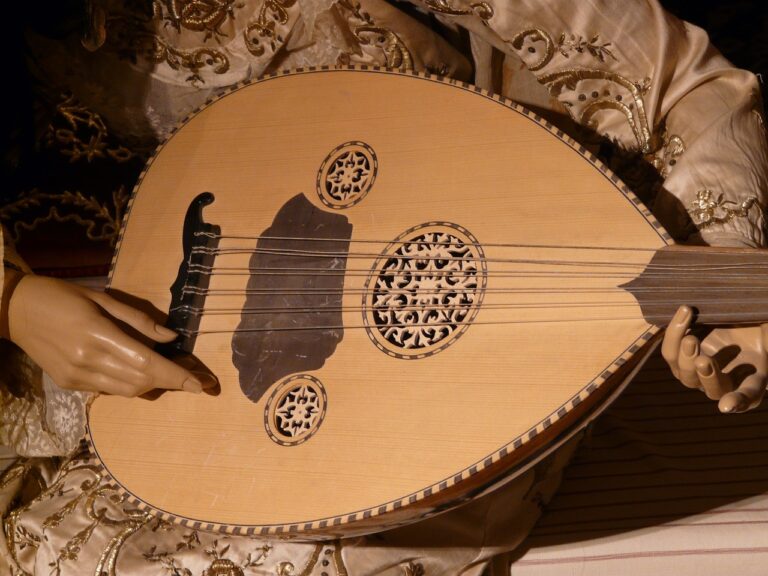What is an Interlude in Music, and Why Do Albums Have Them?
Have you ever listened to music only to find a random short track in the middle of a song or album? That’s an interlude, and they’ve become something of a lost art since the popularity of streaming. But this raises an important question: Why do some albums have interludes?
Artists use extended instrumental sections as a break within a composition. These interludes are an opportunity to refocus the listener. Various artists have used Interludes to create momentum and connect thematic dots.
It’s not enough to know why albums use musical interludes; it also helps to understand how to identify them and what they mean. Below, you’ll learn more about understanding interludes in music, identifying different types, and how to use them in any piece of music.
What is an Interlude in Music?
An interlude is a short music track connecting two parts of a song or album. It may signal the intro of music, a transition for music, or an ending of music. What makes an interlude different from other music parts is its focus on being “the event between.”
An interlude is an instrumental passage or transitional track for listeners. Today, you’ll find they are less common in popular music. Before, you could find them in the middle of an album’s beginning, transitioning from one song to another.
Because interludes are a tradition that stretches back several decades, you can find them in almost every genre of music. Yet, they are often a staple of R&B and hip hop. Interludes in pop are less common because music in this genre is short and catchy.
Some musicians use them to add a dramatic effect to the intro, others are in the middle for a break, and some serve the purpose of a chilling outro. Their purpose changes depending on how the artist uses them.
What’s the Purpose of an Interlude
Much like interludes on television, musicians use them for similar reasons:
- To transition between different parts of a song, album, ep
- To create an engaging climax for a song or album
- Transitioning between different emotional feelings in a song or album
- Showing changes in the tempo, melody, and rhythm of a music
- To provide a break for someone listening to an entire album
Any major transition divided by music is a sign you are hearing an interlude. This includes you transitioning from not listening to music to currently listening.
In a sense, an interlude’s purpose hasn’t changed since the 1400s, when it marked the transition between different parts of a play (or different plays). In medieval theater, you could find them in the transition between dramas and other play genres. You could call interludes a “palate cleanser” preparing you for an upcoming change.
When an artist wants to vary styles between songs, they prepare your senses for another experience. Interludes provide a smooth transition with switching without remnants of the previous track overlap on top of what is new.
Why do Musicians use Interludes in Songs?
The use of interludes in songs serves several purposes and can greatly enhance the listening experience. Some of the most common reasons that artists use interludes include:
- Transitions and Segues
Transitions and segues can be vital points on an album, connecting track to track in an extremely dynamic way. Musicians use interludes as a way to provide an end cap for certain songs or sections of an album, and help propel the listener to their next intended themes.
- Atmosphere and Mood
Each interlude is like a mood sampler. Musicians play around with different tunes and harmonies to cook up feelings – whether it’s a chill vibe, pure excitement, or a hit of nostalgia. These interludes aren’t just random pit stops; they’re like the architects of the whole emotion journey in the song. They’re the quiet scenes in a movie that gear you up for the big action or drama.
To put it simply, interludes are like the mood maestros of the song. They’re the pause buttons where you can sip your metaphorical drink and get ready for what’s coming up next.
- Building Anticipation
Crafting anticipation in music is like weaving an enigmatic tale that keeps the audience on the edge of their seats, yearning for what lies ahead. In this intricate narrative, interludes emerge as pivotal elements, akin to chapters that propel the story forward. These musical pauses aren’t just empty gaps; they’re deliberate spaces where composers strategically plant seeds of expectation, fostering a sense of excitement and curiosity.
If you want to include include an interlude in your next song, it helps to know why you might want to do it. Below are some different interludes illuminating why you see them in songs.
Types of Interludes
There are many different types of interludes in an album or music. The different types are mainly separated by how they are used, which you can find below:
| Type of Interlude | Definition |
|---|---|
| Introductory | A segment at the beginning of a song or album that sets the tone or introduces the main musical themes. |
| Transitionary | Segments within a song or between tracks help shift the mood, tempo, or theme, ensuring a smooth flow in the music. |
| Outro | The concluding segment of a song or track often signifies closure or winds down the musical themes. |
| Instrumental | A passage or entire track where instruments play without vocal accompaniment, highlighting the music itself. |
| Skits | An album’s short spoken word or acted segments often convey a message, introduce a story, or provide comic relief. |
Introductory Interlude
Some artists like to use an extended instrumental break at the beginning of an album or song set the stage for what’s to come. They either use a standalone track or clump the interlude and main composition together. The introduction to the album is a great place to place one.
Sometimes, the introduction acts as a great way to set the story. Much like reading a book, you know that a powerful introduction can help bring you into the experience.
Interlude Example – Billie Eilish’s 2019 Album
Billie Eilish used the 14-second track “!!!!!!!” to kick off her 2019 album, WHEN WE ALL FALL ASLEEP, WHERE DO WE GO?
This 14-second track, which merely comprises a few sniffs and laughs, sets the bedroom atmosphere and separates the album from some of the biggest pop band alternatives. Billie Eilish is unique compared to many competing artists in the same genre.
Transitionary interludes (mid-album or mid-song)
Mid-album (or mid-song) interludes are the most common and well-known. They come in all shapes and sizes, allowing the band to show some personality. They can be used to transition from one song or one verse to another.
These transitionary interludes can be anything but are often musical breakdowns. These can help bring you into the album’s story further, transitioning through thematic changes from the previous and next song (or part). You’ll often see them as part of beat- or melody-related changes.
Transitionary Example – Municipal Waste
Municipal Waste provides us with an excellent example of this in action. These thrash metal icons use interludes on almost all of their albums to mix up the pace.
You can see this in “Death Prank,” “I Want to Kill the President,” “Black Ice,” “Thrashing’s my Business… and Business is Good”, “Enjoy the Night,” and “Ratbite,” among other songs.
Even chart-topping pop stars like Christina Aguilera sometimes use spoken-word interludes between catchy hits.
Outro Interludes
The third interlude type is an outro. If an artist has more music to include that doesn’t fit with the flow of an album, it’s tacked onto the end of the album or as a final track. These are often an extended silent break before a “secret track.” for die-hard fans.
Outro Example – System of a Down’s Toxicity
System of a Down’s highly successful album “Toxicity” is my first experience. If you punch the number 15 in the CD player, you will hear a hidden track tacked to the album’s end.
Much to my surprise, middle-eastern music started playing for over two minutes. This was none other than a version of “Der Voghormia” (Lord Have Mercy), taken from Armenian Liturgy, attached to the end of the then nu-metal hit, “Aerials w/ Outro.” You can also listen to the outro track, “Arto” alone.
I believe artistic freedoms like this offer insight into what kind of band SOAD is. Their interlude selection separates them from genre staples. The additions also showcase the band’s Armenian side, often found in their lyrics.
Another interesting outro track was at the end of Molotov’s 2007 album Eternamiente. The track, aptly named “Outro,” includes a child singing off-key, followed by giggling for 45 seconds. How heartwarming!
Instrumental Interludes
Instrumental interludes are passages or entire tracks focusing solely on the music without vocal accompaniment. They’re a chance for musicians to showcase their skills and for the instruments to take center stage. Instrumentals can be soothing, energetic, or anywhere between, offering a break from the vocals.
Artists that use instrumentals also treat them as a way to “stretch their legs” between tracks (or parts). The “drop” in electronic music technically counts here, as it seems to cut the track short and abruptly end, acting as a passage that connects the lighter part to the heavier part.
Instrumental Examples – “School” by Calvin Harris
“School” combines electronic and fun music on the 2018 Calvin Harris album: 18 Months. The album was a series of singles, but this changed the tone and gave people a break from the onslaught of vocalized audio.
When music is played, there’s such a thing as “too much” of a single thing, even when backed by a talented singer. This is one example where an interlude connects different parts while simultaneously giving its listeners an interruption and some breathing room.
When interludes are used instrumentally, you can find them as a guitar riff inside music or an album. Both work to tell the listener that they are getting an ear break from vocals or a change in the musical tone.
Skits
Skits are more commonly found in albums rather than individual songs. They’re short, spoken-word or acted segments that can serve various purposes. Skits can be humorous, providing comic relief. They might convey a message or story that ties the album’s tracks together. Or they could be entirely random, adding a touch of unpredictability to an album.
Skit Examples – Tool’s “Lost Keys, Blame Hoffman.”
If you want an extensive masterclass on interludes, look no further than prog-rock giants, Tool.
Both the band’s songs and albums include varied instrumental additions to build atmosphere. This choice has kept many fans listening to their albums in one sitting, landing them repeat success on the rock charts.
“Lost Keys, Blame Hoffman” is a weird example of their mastery. It’s an audio journey telling the story of Dr. Albert Hofman, the “father of LSD.” The audio track is a reminder that an interlude is a moment that takes you away from the music and brings you through a journey, even if it’s not instrumental. So yes, songwriting is a tool you can use in your interludes.
Crafting the Perfect Interlude: A Step-by-Step Guide
Whether creating a brief interlude or one that lasts for several minutes, you need to know how to start if you want to write one. The eight-step process below will give you a good idea of where to start if you make an interlude.
Step 1: Define the Purpose
Before diving into the creative process, it’s crucial to understand why you want an interlude. Are you looking to bridge two different song sections (or two songs)? Do you want to introduce new musical ideas like a theme or melody? Or maybe you’re aiming to offer a momentary break to the listener? By defining its purpose, you can shape the interlude more effectively.
Step 2: Choose the Duration
Interludes can be brief, lasting only a few seconds, or extend for several minutes. Determine this transition’s approximate duration based on its role in your song or album. Remember, it shouldn’t overstay its welcome but be long enough to serve its intended purpose.
For example, some interludes are seconds long to break up the verses. This, compared to songs with several-minute-long transitions, is used for different purposes (usually to add to the story).
Step 3: Decide on Instrumentation
Will your interlude be instrumental, vocal, or a blend of both? The choice of instruments can significantly influence the mood of one. You might choose soft, ambient sounds for a calming effect or intense, percussive instruments for a more energetic transition.
Think about how your instrumentation provides a musical passage between different sections. Does it slowly transition to the distinct feel of the instrument? Think about how it complements your music.
Step 4: Develop a Melodic or Rhythmic Theme
An interlude can introduce a new melodic or rhythmic idea or build upon existing themes from the song. Craft a simple melody or rhythm that resonates with the overall mood you’re trying to convey.
When doing this album-wide, consider how this transition might fit with the rest of the tracks (not just the two nearby). If you want to break from the flow of music, it still needs to have some connection with what’s on the album or EP. Otherwise, you might end up throwing off the listener.
Step 5: Experiment with Dynamics
Dynamics refer to the volume variations in a musical piece. By playing around with crescendos (gradually getting louder) or diminuendos (gradually getting quieter), you can add depth and emotion to the interlude. Depending on your goal, such shifts can create anticipation or a soothing effect.
Step 6: Add Textural Elements
Texture in music pertains to the layering of sounds. You might want to introduce background ambient sounds, harmonies, or counter-melodies. These elements can add richness and complexity to the interlude, making it more engaging.
Step 7: Test and Refine
Once you’ve drafted your interlude, it’s essential to see how it fits within the larger context of your song or album. Play it in sequence with the surrounding sections to ensure it transitions smoothly. Adjust and refine as needed to achieve the desired effect.
Step 8: Gather Feedback
Sometimes, a fresh set of ears can provide invaluable insights. Share your interlude with fellow musicians, friends, or mentors. Their feedback can help you fine-tune the piece, ensuring it serves its purpose and resonates with listeners.
By following these steps, you’ll be on your way to crafting a compelling interlude that enhances the musical journey of your song or album.
Tips for Writing an Effective Interlude
- Serve the Song or Album: Always remember that the interlude should complement the song or album, not distract from it. Make sure it fits the overall narrative and flow.
- Keep it Fresh: While interludes can echo themes or motifs from the song, they should introduce a fresh perspective or variation to prevent repetitiveness.
- Maintain Cohesiveness: Even as you introduce new elements in the interlude, ensure they are cohesive with the rest of the song or project, ensuring a seamless listening experience.
- Emotion is Key: Like any other song part, the interlude should evoke emotion. Be it a sense of calm, excitement, nostalgia, or anticipation, aim to make the listener feel something.
- Less Can Be More: Sometimes, a simple and minimalist approach can be more impactful than an overly complex one. Don’t overcomplicate; let the music breathe.
- Experiment with Silence: Remember that silence is also a powerful musical tool. A brief silence before or after an interlude can amplify its impact.
- Avoid Overusing: While interludes can be impactful, overusing them in an album or song can dilute their effect. Use them judiciously.
- Transition Smoothly: Ensure that the interlude transitions smoothly into the next section. Abrupt or jarring changes can disrupt the listener’s experience.
- Evolve with the Theme: If you use multiple interludes in an album, make sure they evolve with the theme, marking different phases or emotions.
- Stay Authentic: It’s easy to use an interlude as a trendy filler, but the most memorable ones stay true to the artist’s authentic voice and the song’s message.
By keeping these tips in mind, you can craft interludes that enhance your musical narrative and resonate deeply with your listeners.
Conclusion
Whether an artist uses interludes as an opening gag, an homage to a brilliant comedy show they watched, or a palate-cleanser, is entirely their artistic decision. They might also choose to use an interlude within the song or the album as a whole. Whatever the reason, take a moment to thank your artist for making creative interludes.
Interlude FAQs
How do interludes enhance the album experience?
In the context of an album, interludes play a crucial role in enhancing the overall experience for the listeners. They provide a bridge between songs, connecting them thematically or musically. By strategically placing interludes throughout an album, artists can guide the listener through the album’s story, creating a cohesive narrative. Interludes can evoke emotions, build tension, or add a sense of mystery, further immersing the audience in the album.
How do interludes contribute to the storytelling?
Interludes within albums can function as storytelling devices. They can introduce new themes or motifs that will be explored later in the album, foreshadowing what is to come. Interludes can also serve as intermissions, pausing the narrative and allowing the listener to reflect on the previous songs or prepare for what is yet to come. In this way, interludes add depth and complexity to the overall storytelling of the album.
How do interludes within songs add depth and variety to the music?
Interludes often add depth and variety to the music by introducing new musical elements or changing the tempo and mood. It can provide a refreshing break from the main verses and choruses, keeping the listener engaged and interested.
Why do album producers choose to include interludes in albums?
Album producers choose to include interludes in albums for several reasons. Firstly, they can enhance the listening experience, creating a cohesive album that tells a story or explores a specific theme. Additionally, they can serve as creative outlets for musicians, allowing them to experiment with different musical styles or showcase their instrumental prowess. Lastly, interludes can provide a break for the listeners, allowing them to process the previous songs or prepare for what is to come.
What makes a good interlude?
A good interlude complements the rest of the song or album, adding value to the overall musical experience. It should serve a purpose within the composition and enhance the listener’s journey. A well-crafted interlude can captivate the audience, create anticipation, or provide a moment of reflection.
How do interludes change the mood of a song?
An interlude can significantly impact the mood of a song. Introducing new musical elements, changing the tempo, or altering the instrumentation can shift the atmosphere. This change in mood can evoke different emotions, intensify the listener’s engagement, or provide a moment of relief.
How do interludes contribute to the flow of an album?
The flow of an album refers to how the songs connect and transition from one another. Interludes play a crucial role in maintaining a seamless flow throughout the album. They provide bridges between songs, smoothing the transitions and guiding the listener through the album’s journey. Interludes can also build anticipation for upcoming songs or contrast musical styles and themes.








